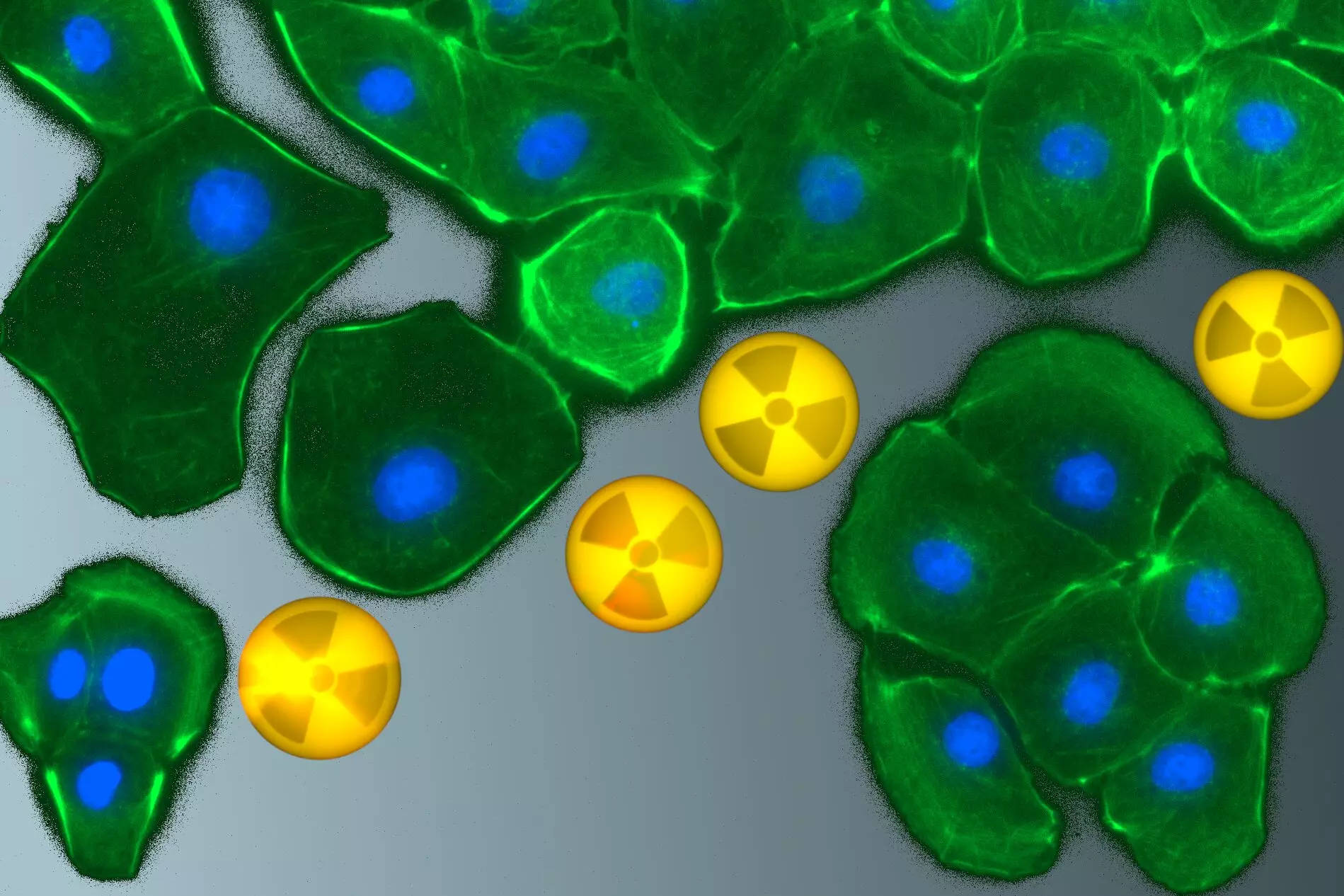The advent of modern science has brought immense benefits, yet it has also introduced significant risks through the use of radionuclides. These unstable isotopes can infiltrate our bodies via inhalation, ingestion, or even through wounds, presenting a real threat to human health. The traditional focus on studies regarding radionuclide exposure has been predominantly on animal experiments, leaving a glaring gap in our understanding of the cellular and molecular implications of such exposure. Many individuals are unaware that radionuclides do not only impact the environment; they can deeply affect our biological systems as well, necessitating a more nuanced examination of their effects at a cellular level.
Recent research conducted by a collaborative team from Helmholtz-Zentrum Dresden-Rossendorf (HZDR) and TU Dresden sheds light on this essential aspect. Their findings indicate that kidney cells are particularly vulnerable to the detrimental effects of radionuclides and other heavy metals. As critical components in the detoxification process, kidneys filter and excrete harmful substances. The intricate processes through which this organ interacts with toxic materials are yet to be fully understood, making studies like this significantly urgent.
The Sources and Consequences of Radionuclide Pollution
Radionuclides are not merely byproducts of medical or industrial activities; they are also natural constituents found in the earth’s crust. Geological processes such as weathering and erosion release these elements into our environment, adding a layer of complexity to their management and regulation. Over the past six decades, the industrial and medical sectors have leveraged these radionuclides with increasing frequency, complicating the situation further. Mining operations, nuclear accidents, and structural failures in containment systems have all contributed to the release of these hazardous substances into our surroundings.
Compounding the issue is the usage of radionuclides in cancer diagnostics and treatments. While these applications save lives, they also result in potential environmental contamination. Therefore, understanding the health risks associated with acute or chronic exposure to radioactive materials is paramount. As highlighted by Dr. Astrid Barkleit from HZDR, the acute and prolonged effects of these substances only amplify the need for comprehensive research focusing on how radionuclides behave when they enter biological systems, especially the kidneys.
The Role of Advanced Research Techniques
The research team employed advanced methodologies to investigate the specific interactions between radionuclides and kidney cells. By cultivating human and rat kidney cells in vitro, they could meticulously explore the impact of various heavy metals, including barium, europium, and uranium. This sandbox-like environment allowed for greater accuracy in understanding how these metals affect cell viability, death, and intracellular uptake.
Using sophisticated analytical techniques—including luminescence spectroscopy and chemical microscopy—the researchers could visualize the cellular responses to metal exposure. Such in-depth analysis is crucial not only for determining immediate toxicity but also for understanding long-term consequences on kidney function. The research conducted at TU Dresden’s Central Radionuclide Laboratory showcases the integration of cutting-edge science with a focus on unraveling the hidden complexities of metal toxicity.
Speciation: The Key to Understanding Heavy Metals
One of the pivotal findings of the study involves the concept of metal speciation, which describes the existence of different chemical forms that an element can take. This aspect becomes paramount in understanding the environmental behavior of heavy metals and their biological interactions. The study illuminated how the introduction of aqueous metal solutions alters the biological environment for kidney cells, revealing transformations in the chemical bonding of these elements.
The researchers demonstrated that once metal ions interact with cellular molecules, they lose their aqueous characteristics and adapt to the biological milieu. This transformation plays a critical role in how cells respond to and manage toxic substances. Each metal showcased different effects on cellular structures, resulting in varying degrees of cellular damage—an insight that could significantly influence how we develop treatment options for heavy metal exposure.
Implications for Health and Safety
Understanding the interactions between radionuclides and kidney cells is not merely an academic exercise; it bears real-world implications for public health. As regions with a history of uranium mining grapple with contamination challenges, elucidating the mechanisms by which heavy metals accumulate and affect biological systems is essential for shaping future safety protocols. The findings from HZDR and TU Dresden not only advance scientific understanding but also underscore the necessity for developing effective decorporation agents—substances that will help eliminate accumulated radionuclides from the human body with minimal harm.
Attention to the intricate balance between environmental exposure and human health cannot be overstated. As we strive to mitigate the risks associated with radionuclides, ongoing research will be crucial in forming a comprehensive strategy to safeguard both our health and our environment. Each study builds on our understanding, and what was once seen as an insurmountable problem becomes more navigable with every revelation in this evolving field.


Leave a Reply